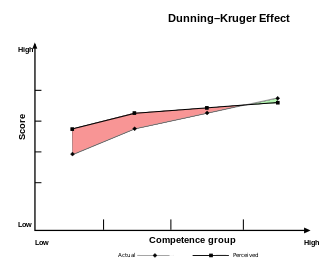
The relationship between biology and sexual orientation is a subject of on-going research. While scientists do not know the exact cause of sexual orientation, they theorize that it is caused by a complex interplay of genetic, hormonal, and environmental influences. However, evidence is weak for hypotheses that the post-natal social environment impacts sexual orientation, especially for males.

In human biology, handedness is an individual's preferential use of one hand, known as the dominant hand, due to it being stronger, faster or more dextrous. The other hand, comparatively often the weaker, less dextrous or simply less subjectively preferred, is called the non-dominant hand. In a study from 1975 on 7,688 children in US grades 1–6, left handers comprised 9.6% of the sample, with 10.5% of male children and 8.7% of female children being left-handed. Overall, around 90% of people are right-handed. Handedness is often defined by one's writing hand, as it is fairly common for people to prefer to do a particular task with a particular hand. There are people with true ambidexterity, but it is rare—most people prefer using one hand for most purposes.
The term laterality refers to the preference most humans show for one side of their body over the other. Examples include left-handedness/right-handedness and left/right-footedness; it may also refer to the primary use of the left or right hemisphere in the brain. It may also apply to animals or plants. The majority of tests have been conducted on humans, specifically to determine the effects on language.

The planum temporale is the cortical area just posterior to the auditory cortex within the Sylvian fissure. It is a triangular region which forms the heart of Wernicke's area, one of the most important functional areas for language. Original studies on this area found that the planum temporale was one of the most asymmetric regions in the brain, with this area being up to ten times larger in the left cerebral hemisphere than the right.

The Dunning–Kruger effect is a cognitive bias in which people with limited competence in a particular domain overestimate their abilities. It was first described by Justin Kruger and David Dunning in 1999. Some researchers also include the opposite effect for high performers: their tendency to underestimate their skills. In popular culture, the Dunning–Kruger effect is often misunderstood as a claim about general overconfidence of people with low intelligence instead of specific overconfidence of people unskilled at a particular task.

Fraternal birth order, also known as the older brother effect, has been correlated with male sexual orientation, with a significant volume of research finding that the more older brothers a male has from the same mother, the greater the probability he will have a homosexual orientation. Ray Blanchard and Anthony Bogaert first identified the association in the 1990s and named it the fraternal birth order effect. Scientists have attributed the effect to a prenatal biological mechanism, since the association is only present in men with older biological brothers, and not present among men with older step-brothers and adoptive brothers. The mechanism is thought to be a maternal immune response to male fetuses, whereby antibodies neutralize male Y-proteins thought to play a role in sexual differentiation during development. This would leave some regions of the brain associated with sexual orientation in the 'female typical' arrangement – or attracted to men. Biochemical evidence for this hypothesis was identified in 2017, finding mothers with a gay son, particularly those with older brothers, had heightened levels of antibodies to the NLGN4Y Y-protein than mothers with heterosexual sons.

Mental rotation is the ability to rotate mental representations of two-dimensional and three-dimensional objects as it is related to the visual representation of such rotation within the human mind. There is a relationship between areas of the brain associated with perception and mental rotation. There could also be a relationship between the cognitive rate of spatial processing, general intelligence and mental rotation.
The autism-spectrum quotient (AQ) is a questionnaire published in 2001 by Simon Baron-Cohen and his colleagues at the Autism Research Centre in Cambridge, UK. Consisting of fifty questions, it aims to investigate whether adults of average intelligence have symptoms of autism spectrum conditions. More recently, versions of the AQ for children and adolescents have also been published.
A relationship between handedness and sexual orientation has been suggested by a number of researchers, who report that heterosexual individuals are somewhat more likely to be right-handed than are homosexual individuals.

In fields such as epidemiology, social sciences, psychology and statistics, an observational study draws inferences from a sample to a population where the independent variable is not under the control of the researcher because of ethical concerns or logistical constraints. One common observational study is about the possible effect of a treatment on subjects, where the assignment of subjects into a treated group versus a control group is outside the control of the investigator. This is in contrast with experiments, such as randomized controlled trials, where each subject is randomly assigned to a treated group or a control group. Observational studies, for lacking an assignment mechanism, naturally present difficulties for inferential analysis.

David J. Lubinski is an American psychology professor known for his work in applied research, psychometrics, and individual differences. His work has focussed on exceptionally able children: the nature of exceptional ability, the development of people with exceptional ability. He has published widely on the impact of extremely high ability on outputs such as publications, creative writing and art, patents etc.
The Edinburgh Handedness Inventory is a measurement scale used to assess the dominance of a person's right or left hand in everyday activities, sometimes referred to as laterality. The inventory can be used by an observer assessing the person, or by a person self-reporting hand use. The latter method tends to be less reliable due to a person over-attributing tasks to the dominant hand.
Camilla Persson Benbow is a Swedish-born (Scania) American educational psychologist and a university professor. She studies the education of intellectually gifted students.
Non-verbal leakage is a form of non-verbal behavior that occurs when a person verbalizes one thing, but their body language indicates another, common forms of which include facial movements and hand-to-face gestures. The term "non-verbal leakage" got its origin in literature in 1968, leading to many subsequent studies on the topic throughout the 1970s, with related studies continuing today.
In modern psychology, vigilance, also termed sustained concentration, is defined as the ability to maintain concentrated attention over prolonged periods of time. During this time, the person attempts to detect the appearance of a particular target stimulus. The individual watches for a signal stimulus that may occur at an unknown time.
The approximate number system (ANS) is a cognitive system that supports the estimation of the magnitude of a group without relying on language or symbols. The ANS is credited with the non-symbolic representation of all numbers greater than four, with lesser values being carried out by the parallel individuation system, or object tracking system. Beginning in early infancy, the ANS allows an individual to detect differences in magnitude between groups. The precision of the ANS improves throughout childhood development and reaches a final adult level of approximately 15% accuracy, meaning an adult could distinguish 100 items versus 115 items without counting. The ANS plays a crucial role in development of other numerical abilities, such as the concept of exact number and simple arithmetic. The precision level of a child's ANS has been shown to predict subsequent mathematical achievement in school. The ANS has been linked to the intraparietal sulcus of the brain.
Bias against left-handed people is bias or design that is usually unfavorable against people who are left-handed. Handwriting is one of the biggest sources of disadvantage for left-handed people, other than for those forced to work with certain machinery. About 90 percent of the world's population is right-handed, and many common articles are designed for efficient use by right-handed people, and may be inconvenient, painful, or even dangerous for left-handed people to use. These may include school desks, kitchen implements, and tools ranging from simple scissors to hazardous machinery such as power saws.

The hormonal theory of sexuality holds that, just as exposure to certain hormones plays a role in fetal sex differentiation, such exposure also influences the sexual orientation that emerges later in the individual. Prenatal hormones may be seen as the primary determinant of adult sexual orientation, or a co-factor with genes, biological factors and/or environmental and social conditions.
Sex differences in human intelligence have long been a topic of debate among researchers and scholars. It is now recognized that there are no significant sex differences in average IQ, though particular subtypes of intelligence vary somewhat between sexes.
An estimated 90% of the world's human population consider themselves to be right-handed. The human brain's control of motor function is a mirror image in terms of connectivity; the left hemisphere controls the right hand and vice versa. This theoretically means that the hemisphere contralateral to the dominant hand tends to be more dominant than the ipsilateral hemisphere, however this is not always the case and there are numerous other factors which contribute in complex ways to physical hand preference.







